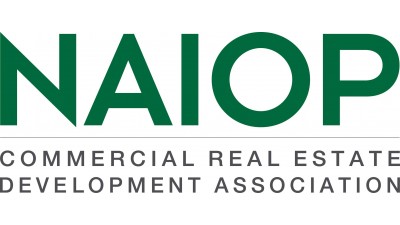A Recession Could Come As Soon As 2020. Here’s How It Would Impact CRE

More than a decade after the housing bubble burst and the U.S. entered the worst period of economic decline since the Great Depression, the economy is still seeing significant growth. U.S. gross domestic product continues to grow at a rate of over 2% in 2018 and is expected to see continued growth at 3% or more over the next few years.
“The economy is growing above its potential growth rate, unemployment is steadily declining, spending is rock-solid and business investment is firming,” Moody’s Analytics Director of Real-time Economics Ryan Sweet said. “This bodes well for commercial real estate.”
Despite strong economic activity, the end to the positive cycle could be coming sooner than CRE professionals think, Sweet said. Tightening monetary policy, global protectionism and a fiscal policy hangover could trigger a recession as early as 2020. In a Reuters poll of 100 economists taken last month, those surveyed forecast a one in three chance of a downturn within the next two years.
Finding The Imbalances
Unlike the Great Recession of 2007, economists don’t believe that subprime housing mortgages will be the cause of the next downturn. The Federal Reserve, which raised interest rates last month for the second time this year and announced two additional raises would happen in 2018, could overshoot efforts to curb inflation, triggering a recession. Rising rates would impact the attractiveness of loans for both the residential and commercial sides of real estate.
Increased economic growth, compounded with generous fiscal stimulus occurring at a time the economy is at, or near, full employment, would raise the possibility of a recession in the near future, Sweet said. Unemployment has fallen below 4% for the first time since the early 2000s, and wage growth has seen modest increases. Tax cuts under the Trump administration have added fuel to an already strong economy, creating an environment where it could overheat.
The resulting restriction of economic activity by the Fed could lead to an inverted yield curve, where long-term debt has a lower interest rate, or yield, than short-term debt of the same quality. Inverted yield curves are often an indicator of an imminent recession. Yield spreads between three-month bills and 10-year notes fell below zero for each of the past seven economic slowdowns.
“Recessions are normal and inevitable, but the challenge is knowing when they are going to occur,” Sweet said. “Given how low unemployment is going to get, and the fact that inflation will be running above the 2% target for a set period, the Feds are probably going to apply the brakes a little harder over the next couple of years than the market is expecting.”
Economists predict that the impact will not be as severe, and a combination of fiscal stimulus post downturn and a slashing of interest rates will revive the U.S. economy in 2021, allowing it to grow by 2.1%.
Political Factors
Global events will also play a part in when and how a recession will hit the U.S. In oil-rich Venezuela, where economic collapse and political instability have pushed inflation to an annual rate of 16,428%, oil production has all but stalled. This, combined with the U.S. backing out of the Iran deal, has created economic tension among oil-rich countries, causing oil prices to rise by 50%. Like inverted yield curves, oil price shocks have long been a force behind recessions and impacts everything from higher heating costs to the transportation of construction materials.
U.S. tariffs on trade partners like China, Mexico and Canada have also caused the cost of certain products and construction materials to rise as these trade partners retaliate. Last month, the Trump administration threatened tariffs on $200B of imported Chinese goods.
Beyond consumer products, the steel and aluminum tariffs enacted earlier in the year have already started to cause sourcing problems for developers.
“The Trump administration is trying to narrow the U.S. trade deficit by reducing imports, but imports are critical to the supply chain," Sweet said. "If you disrupt imports, you disrupt the supply chain, and that will have unintended consequences for manufacturing and the U.S. economy.”
Learn more about economic indicators and other commercial real estate news and trends at NAIOP’s CRE.Converge 2018, from Oct. 15 to Oct. 17, in Washington, D.C.
This feature was produced in collaboration between Bisnow Branded Content and NAIOP. Bisnow news staff was not involved in the production of this content.

